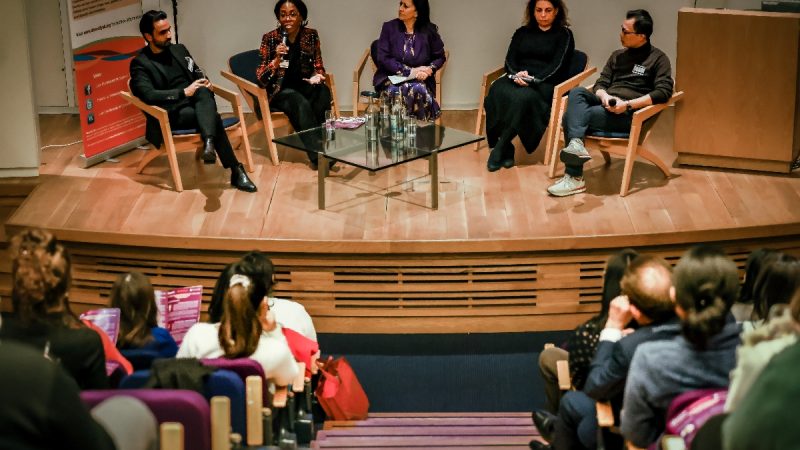Slow Progress in Closing Global Economic Gender Gap – New WEF Report.
 The seventh annual World Economic Forum Global Gender Gap Report 2012, published on 24th October 2012, ranks Nordic countries in top spots, with Iceland, Finland, Norway and Sweden having closed over 80% of their gender gaps. At the bottom of the ranking, some countries still need to close gender gaps of almost 50%, while more than half of those countries surveyed have failed to close their economic gender gap by more than 5% in the past seven years. The United Kingdom dropped two places in the ranking, from sixteenth to eighteenth position, since last year reflecting the continuing economic gloom in the country. The data suggests a strong correlation between those countries that are most successful at closing the gender gap and those that are the most economically competitive.
The seventh annual World Economic Forum Global Gender Gap Report 2012, published on 24th October 2012, ranks Nordic countries in top spots, with Iceland, Finland, Norway and Sweden having closed over 80% of their gender gaps. At the bottom of the ranking, some countries still need to close gender gaps of almost 50%, while more than half of those countries surveyed have failed to close their economic gender gap by more than 5% in the past seven years. The United Kingdom dropped two places in the ranking, from sixteenth to eighteenth position, since last year reflecting the continuing economic gloom in the country. The data suggests a strong correlation between those countries that are most successful at closing the gender gap and those that are the most economically competitive.
The Global Gender Gap Report ranks countries on their ability to close the gender gap in four key areas: access to healthcare, access to education, political participation and economic equality. In the fields of health and education, while there remain critical gaps in some countries such as Pakistan, Ethiopia, Yemen and Benin, progress has been strong globally with 96% of health gaps and 93% of education gaps having now been closed across the 135 economies surveyed in the report.
 By comparison, the global economic gender gap now stands at 60%, while only 20% of the political participation gap has been closed. Long term, this reflects an improvement in the economic status of women in a third of the 135 countries surveyed, including the world’s four largest economies: the USA, China, Japan and Germany. However, progress has been slow, with only nine countries having improved by more than 10% over the past seven years and 75 having improved by less than 5%.
By comparison, the global economic gender gap now stands at 60%, while only 20% of the political participation gap has been closed. Long term, this reflects an improvement in the economic status of women in a third of the 135 countries surveyed, including the world’s four largest economies: the USA, China, Japan and Germany. However, progress has been slow, with only nine countries having improved by more than 10% over the past seven years and 75 having improved by less than 5%.
“The key for the future of any country and any institution is the capability to attract the best talents,” said Klaus Schwab, Founder and Executive Chairman of the World Economic Forum. “In the future, talent will be more important than capital or anything else. To develop the gender dimension is not just a question of equality; it is the entry card to succeed and prosper in an ever more competitive world.”
Saadia Zahidi, Senior Director, Head of the World Economic Forum’s Women Leaders and Gender Parity Programme and report co-author, said: “Six of the top 10 performing countries in this year’s Global Competitiveness Index also feature in the top 20 of the Global Gender Gap Index – this shows the imperative for countries that have already invested in the health and education of women to address the economic and political realms, and for those that have not to do so before their economies fall further behind.”
Regional Analysis
Europe dominates the top 10 again in this year’s ranking, with Iceland holding on to the top spot with the best overall score on both educational attainment and political empowerment, followed by Finland, Norway, Sweden and Ireland respectively. Next are Denmark (7) and Switzerland (10). Italy, Greece (82) and Turkey (124) rank lowest.
In North America, the United States slipped five places to 22nd due to a smaller percentage of women in political decision-making positions. Meanwhile, Nicaragua is Latin America’s champion at 9th in the global rankings. Brazil (62) moves up 20 places on the back of improvements in primary education and the number of women in ministerial positions.
Asia’s highest ranking country is the Philippines (8), primarily due to success in health, education and economic participation. China, which is the second lowest ranking country on the health and survival subindex (132) due to a skewed sex ratio at birth, scored highly in terms of female labour force participation (74%). Japan (101) and South Korea (108) are among the lowest ranking OECD economies. India (105) is the lowest-ranked of the BRIC economies, while Pakistan is among the bottom 10 countries for primary education, secondary education and literacy.
In the Arab world, the United Arab Emirates (107) continues to hold the top spot with higher than average economic participation of women and parity on education, including a reverse gender gap on tertiary education where almost three times as many women are enrolled as men. Syria, on which data was collected before the outbreak of civil war, fell three places to 132, slipping below Saudi Arabia (131) which has improved by almost 10% relative to its score in 2006. Yemen (135) remains the lowest-ranking Arab world country despite progress since 2006.
The highest placed sub-Saharan African country is Lesotho (14). It slipped five places due to losses in wage equality for similar work and estimated earned income, but remains the only country from the region that has closed the gender gap in both the education attainment and health and survival subindices. It is joined in the top 20 by South Africa (16), while Mali (128), Côte d’Ivoire (130) and Chad (133) are the lowest.
“Gender gaps can be closed with the right policies. As countries experiment with policy choices in this area, they should share the lessons from their experience to accelerate progress,” said co-author Laura Tyson, S. K. and Angela Chan Professor of Global Management, Haas School of Business, University of California at Berkeley, USA.
“In countries where women have more schooling than men, the frontline for change has shifted to making marriage and motherhood compatible with fuller economic and political participation of women,” said report co-author Ricardo Hausmann, Director of the Centre for International Development at Harvard University.
About the Global Gender Gap Report
he Global Gender Gap Report’s index assesses 135 countries, representing more than 93% of the world’s population, on how well resources and opportunities are divided among male and female populations. The report measures the size of the gender inequality gap in four areas:
- Economic participation and opportunity – salaries, participation and highly-skilled employment
- Education – access to basic and higher levels of education
- Political empowerment – representation in decision-making structures
- Health and survival – life expectancy and sex ratio
Index scores can be interpreted as the percentage of the gap that has been closed between women and men. Of these, 111 have been covered since the first edition of the report six years ago. Thirteen out of the 14 variables used to create the index are from publicly available hard data indicators from international organizations such as the International Labour Organization, the United Nations Development Programme and the World Health Organization.
For the second consecutive year, the report includes new data from a survey of women’s ministries analysing the use of national policies designed to facilitate female workforce participation from 74 countries. Aetna, Alcatel-Lucent, Bahrain Mumtalakat Holding Company, Burda Media, Clifford Chance, The Coca-Cola Company, Ernst & Young, HCL Technologies, Heidrick & Struggles, Manpower Group, McKinsey & Company, NYSE Euronext, Nomura Holdings, The Olayan Group, Omnicom Group, Renault-Nissan Alliance and Takeda Pharmaceutical are Community Partners of the World Economic Forum’s Women Leaders and Gender Parity Programme.




